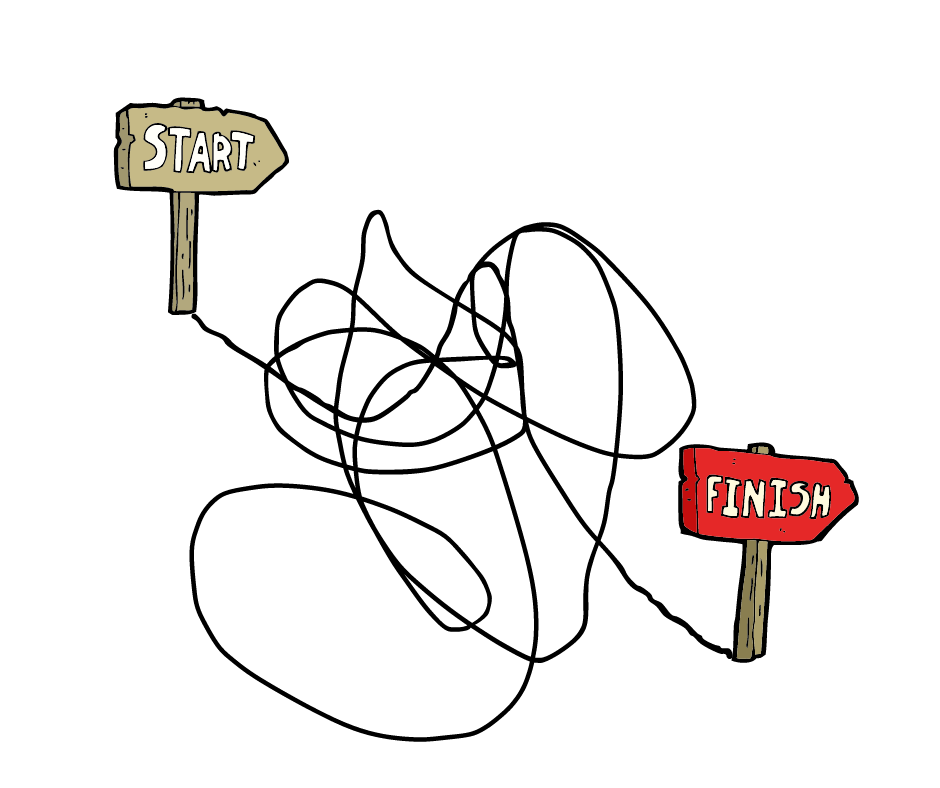The Middle: Where The Magic Happens
- weatherlyplan
- May 29, 2024
- 4 min read
Updated: May 30, 2024

We all start somewhere. When it comes to education, careers, relationships, hobbies, etc., our beginnings start with a clean slate. We begin building a foundation and forge ahead. We typically know very little at the time and focus on putting the pieces together to see where it goes.
At the other end of this spectrum is the result of where we started. We master a subject, we top out in our careers, we have an amazing relationship with our partner and become a teacher of our hobbies. It becomes routine.
The Middle
But, like a jelly donut, the middle is what creates the thrill -- it's where the magic happens. True self is found, careers are molded, and relationships create amazing moments (personal and business).
Taking a step back to look at this giant eco-system we call life, it's quite astounding how we put a massive emphasis on where we started. Whether it be a specific university, a company, a town we grew up in or a culture we were born into. Yes, important, but merely a sliver of what matters. For a lot of us, this time is structured. Merely checking boxes to get the green light to use our skills. Some of these skills taught, while many just a part of who we are.
We also remember how people lived their final years. For most, not very magical.
Grit and Creativity
This middle period is where the grit comes into play. Narratives are pushed and survival instincts are put to the test. Animal spirits come alive and great things happen. Most of us spend the first 20 years of life preparing for what we will do for the next 40-50 years. These 40-50 years are when businesses are created, families are formed, life saving inventions are created and legacies are built. This is when it happens. Don't miss it.
Renowned Harvard professor, Arthur Brooks, states that we reach our creative peak not in our 60's, but in our 30's, and if we are lucky, our 40's. Realizing this truly makes a lot of us think, 'what am I doing and how do I keep doing it if my mental pencil just isn't as sharp?' Mr. Brooks' recent book, 'From Strength to Strength,' dives into this topic in much more depth.
The environment of survival brings out the best in us. It forces idea generation and improvisation. Failing a test in high school hurts, but the consequences are nil. Losing a pickleball game in retirement could mean you are picking up the tab for lunch. Failing at a venture in your prominent career years can carry a higher wager that isn't so digestible. We push to make it happen. The stakes are higher.

Here Today, Gone Tomorrow
Humans aren't the only ones to peak and find a way to flourish on the other side of the fence - businesses are not immune. Reading a chapter out of the recent Morgan Housel's book, 'Same as Ever,' he discusses the story of Sears. Sears was once the country's biggest retailer. Quite simply, it was the Amazon or Wal-Mart of today. Sears started with an idea, took a chance, and became a massive part of our economy and our country's fabric. The magic of Sears happened in the middle. For decades, they built a namesake, successful lines of business, bought other companies, and worked to become a household name and trusted brand for most Americans. Creativity flourished. Until it didn't. Unlike humans, Sears didn't get to retire and just play pickleball. The company crossed over the creative line, got too big and fell hard.
Nothing lasts forever. The magic ended. The creativity ended. They got big. When big things fall, it is much more destructive. Flick an ant off a 10 story ledge and it survives just fine. Push a horse of the same ledge and you have mass destruction. Sears was that horse.
We get used to seeing names like Wal-Mart, Amazon, Google and Exxon Mobil and feel that they will always be around. For most of our lives they have been. It is what we know. But just think, in 2020, the average lifespan of a company on Standard and Poor's 500 Index was just over 21 years. In fact, according to the US Census Bureau, only 12% of US companies are older than 26 years old. Nobody thought a company like Sears could disappear, but it did. They passed their magic period while Wal-Mart and Amazon were entering theirs.
Let's face it, the longest surviving companies in the world are not what you may think. What will they be 100 years from now? 500 years from now? Obviously anyone reading this today will not be watching a stock ticker in 100 years, let alone 500. But it is a testament to the fact that most companies, even ones we couldn't fathom, fail.
The Biggest Bankruptcies in the U.S.

Source: Visualcapitalist.com
This data below shows that, above all, alcohol and manufacturing have the most staying power.

Source: Visualcapitalist.com
Humans aren't much different than businesses. We build, we get creative and make the magic happen, then we get complacent and eventually close our doors. When we are ten years old, it's hard to imagine being 40. When we are 40, it's hard to imagine being 80. Just like it is hard to imagine a world without Amazon, Wal-Mart or Google. But if history holds true, our future family members will open an old amazon box in the attic and look at it cross-eyed the way kids today look at a Sears Christmas Catalog.





On point, as usual!
Great article! Well said, Brad.